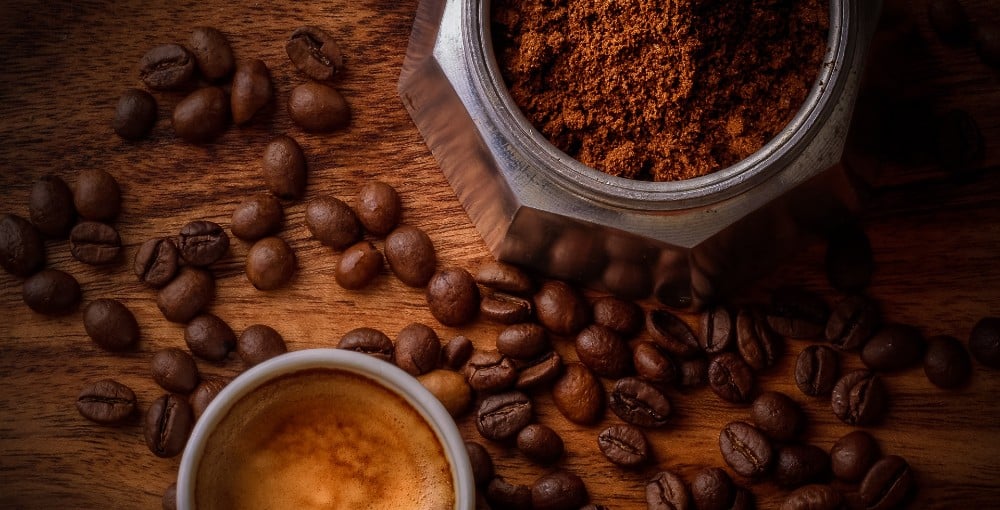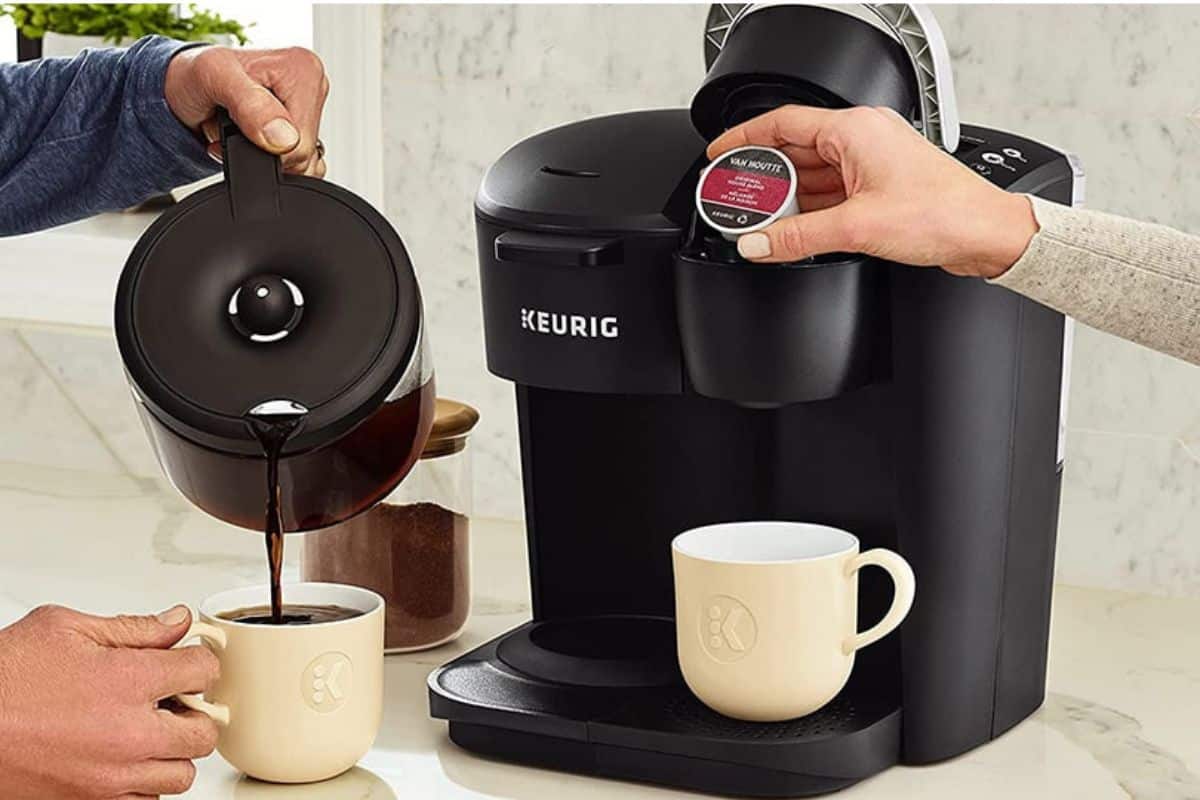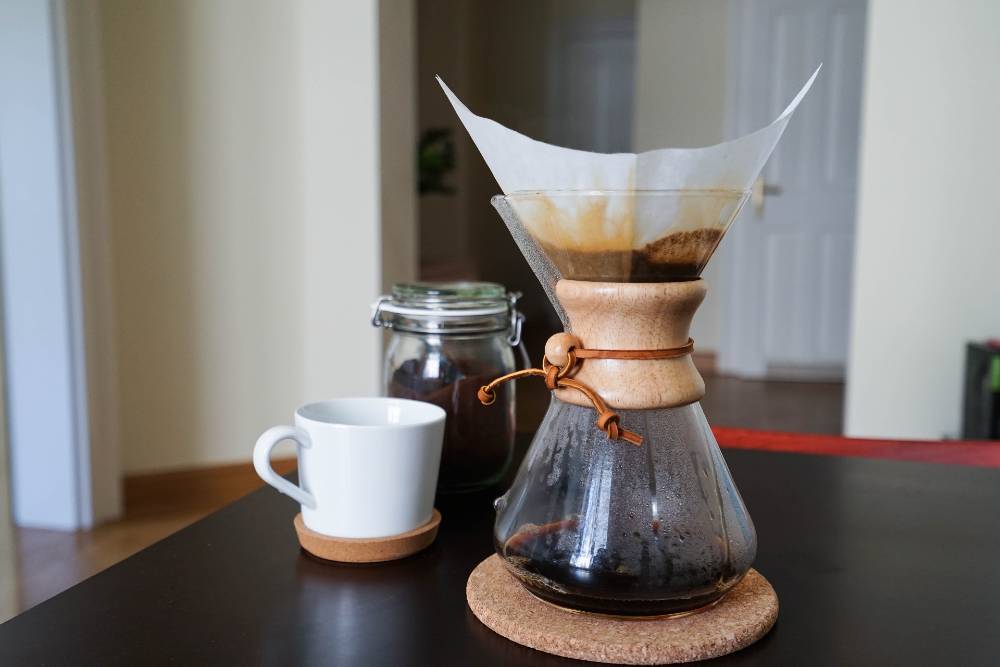We’ve all been there. You arrive home with all of your grocery shopping. While unpacking the bags; you find the lovely fresh coffee you can’t wait to brew up. You read that little bit of text on the bag, “whole beans”, and your heart sinks. You don’t have a grinder and usually buy pre-ground coffee beans.
So you’ve accidentally bought whole coffee beans. How on earth can you make coffee out of these when you can’t grind them up?
Accidentally buying whole coffee beans can turn into a happy little mistake. Most kitchens have the means to do a DIY coffee grind. From smashing them up with a hammer to grinding them with a salt or pepper mill; there is a way you can grind those beans up and make an even better cup of Java. Read on and we’ll find out how to grind coffee beans without a grinder.

Ways To Grind Coffee Beans
A DIY coffee grind can be a really fun way to get creative over how you bust up those beans.
If you’ve never tried coffee brewed from fresh ground beans this could be a whole new world to you. I promise, fresh ground beans make the best coffee.
1. Use a Pestle and Mortal
A pestle and mortar is the good old-fashioned way of smashing up herbs. Why not smash up coffee beans too?
The trick is to crush only small amounts at a time. On top of that, when the beans crush, they can burst into little fragments. You want to use one hand to cover the mortar so you’re both holding it in place and stopping small pieces of bean from escaping.
- Drop a few spoonful’s of coffee beans into your mortar. I find it works best to not fill it very high. Just one layer of beans seems easiest to grind.
- Crush the beans with the pestle with a strong twisting motion. Make sure to cover over the mortar with your other hand so bean pieces don’t explode away.
- Once each bean has been crushed at least a little; press and roll the pestle around the inside of the mortar.
- When the beans are ground to your liking, sit the grounds to the side, and repeat on the next little lot of beans for the batch.
2. Use A Food Processor
A food processor is really just a big blade grinder. While blade grinders are not as good as burr grinders; they still get the job done.
The trick with using a blade grinder, and in this case with a food processor, is to “pulse” the beans. If you were just to turn it on you would get either an overly fine grind or a very inconsistent grind. Pulsing the beans does give you a better grind and stops it getting too fine.
Listen to beans as you pulse them. They will go from a particularly gritty sound to a bit more of a sandy sound. Tip the food processor from side to side making sure the blades are going through the beans. Keep checking on them to make sure there are no particularly large bits of beans still to be chopped up.
For even more control over your grind, I recommend processing the beans in small batches. That way if some beans accidentally get ground up too fine, you can get other small batches that are more of the grind size you want.
3. A Blender
Similar to using a food processor; a blender is very similar to a large coffee bean blade grinder. Again, the trick here is to use a pulse technique.
Because blenders tend to be more of a conical shape than food processors, you might find a blender more appropriate than a food processor. You absolutely must keep the lid on as you pulse the coffee beans. Those little suckers are sure to go whizzing about as you try to blitz them.
Pulse the beans, maybe tip the blender a little to make sure the blade go through the beans, and listen to that grind.
4. A Big Knife
I’m not suggesting you try to slice the beans. That would be dangerous. Do not chop them.
A large wide blade can do a great job of crushing things if you press them down with the side of the blade. I recommend putting your beans in a plastic freezer bag and then wrapping that bag in a kitchen towel. The bag will stop flyaway bean pieces and the towel will protect the bag.
Things you’ll need:
- A knife with a wide blade like a Santoku knife.
- A wide chopping board.
- A freezer bag large enough for all your coffee beans.
- A Kitchen towel to wrap around the freezer bag.
Once you’ve collected your tools of bean destruction there’s nothing more but to get crushing them.
- Drop your beans into the plastic bag.
- Wrap the kitchen towel around the bean bag.
- Lay the towel and bag on your chopping board.
- Place the side of the blade on top of the beans. Hold on to the handle with one hand and place your palm on the top side of the blade (not the knife edge the blade should be horizontal, not vertical). Press down firmly to crack the beans. Do not whack the beans with the side of the knife; the crushing magic is coming from you pressing down on the side of the knife. You would crush garlic with a knife in this same way.
- Lift the towel occasionally to check how fine you have crushed the beans. The bag might need a shake sometimes. Repeat with crushing the beans with the side of the blade until you are happy that the beans are crushed up enough.
5. A Rolling Pin
Similar to crushing coffee beans with the side of a knife, using a rolling pin to crush your beans can be very effective.
Like with the knife method; pop your beans in a plastic bag. There is less need to wrap the bag in a kitchen towel but it’ll certainly lend more protection to the plastic.
For best results, only grind up small amounts of beans at a time; it gives you more control over your grind.
Things you’ll need:
- A rolling pin.
- A wide chopping board.
- A freezer bag large enough for all your coffee beans.
- A Kitchen towel to wrap around the freezer bag.
- Drop your beans into the plastic bag.
- Wrap the kitchen towel around the bean bag.
- Lay the towel and bag on your chopping board.
- Initially, press the rolling pin into the beans to crush them.
- Once each bean is crushed; roll the beans. As you roll your beans, keep lifting the kitchen towel and how fine the grind is becoming.
6. Use a Hammer
The ideal hammer or this is something with a big head. A mallot or meat tenderizer will do the trick nicely. I can’t recommend using something like a claw hammer or a ball pein.
You’re also not going to be striking these beans down like Thor. The technique is ”careful taps”. Just bonk those beans and they’ll fall apart.
Begin by loading your beans into a plastic freezer bag. There is less need to wrap the bag in a kitchen towel for protection. A hammer is quite blunt but the towel would certainly lend some extra protection.
Lay the bag down on a chopping board and begin by just gently bopping the beans with the hammer. It might take a little practice to refine your technique. It’s certainly nothing like a big overhead swing. Try to let the weight of the hammer do the work.
Once all of the beans are burst, you can try for a bit more of a press and grind technique.
Again, I recommend hammering these beans down in small batches at a time for more control over your grind.
7. Use a Salt or Pepper Mill
So here it is. I’ve saved the best DIY method until last. It works brilliantly and is a lot of fun.
Salt and pepper mills also double as excellent manual coffee grinders. In fact, they grind beans in a very similar way that a burr grinder works. A burr grinder, in case you didn’t know, is by far the best kind of coffee grinder.
A burr grinder will give an extremely consistent grind. Unlike with a blade grinder which just chops beans at random. A salt and pepper mill is really a very similar mechanism to a burr grinder.
Instead of chopping at the beans, a burr grinder and salt and pepper mill will crush the beans down to a certain size.
Better yet, many salt and pepper mills have a mechanism which lets you adjust how coarse or fine your grind comes out.
I recommend giving your mill a clean out first. Unless you like salty or peppery coffee.
What Is The Ideal Coffee Grind?
Each brewing method requires a different coffee grind. Typically, the longer your grounds are “stewing” in the water, the coarser your grind should be. On the flip side, because an espresso is not really stewed, it’s meant to be fast, it requires a much finer grind.
- Cold Brew. Very coarse grind.
- French Press. Coarse grind.
- Drip Machine or Pour Over. Medium grind.
- Espresso. Fine grind.
- Turkish Pot (boiled). Very fine grind.
What is the Best Kind of Coffee Grinder?
So you’ve fallen in love with fresh ground coffee and want to brew this way all the time. I knew you would be tempted.
There are two main types of coffee grinders: blade grinder and burr grinders.
A blade grinder is essentially just a small blender. It has a set of little rotating blades which chop in circles; if there happens to be a coffee bean in the way then it gets sliced. While this method will certainly bust up your beans, it chops them up fairly randomly and often results in a very inconsistent grind. You can get very fine particles mixed with large lumps of bean.
A burr grinder will crush your beans through burrs. When bits of bean have been crushed down sufficiently small that they can’t be crushed any more, they fall through the burrs. You end up with a pile of coffee grounds of a very similar size. To adjust the size of the grind, the mechanism just moves closer together or further apart.
A burr grinder provides the best grind for your coffee beans by far.





